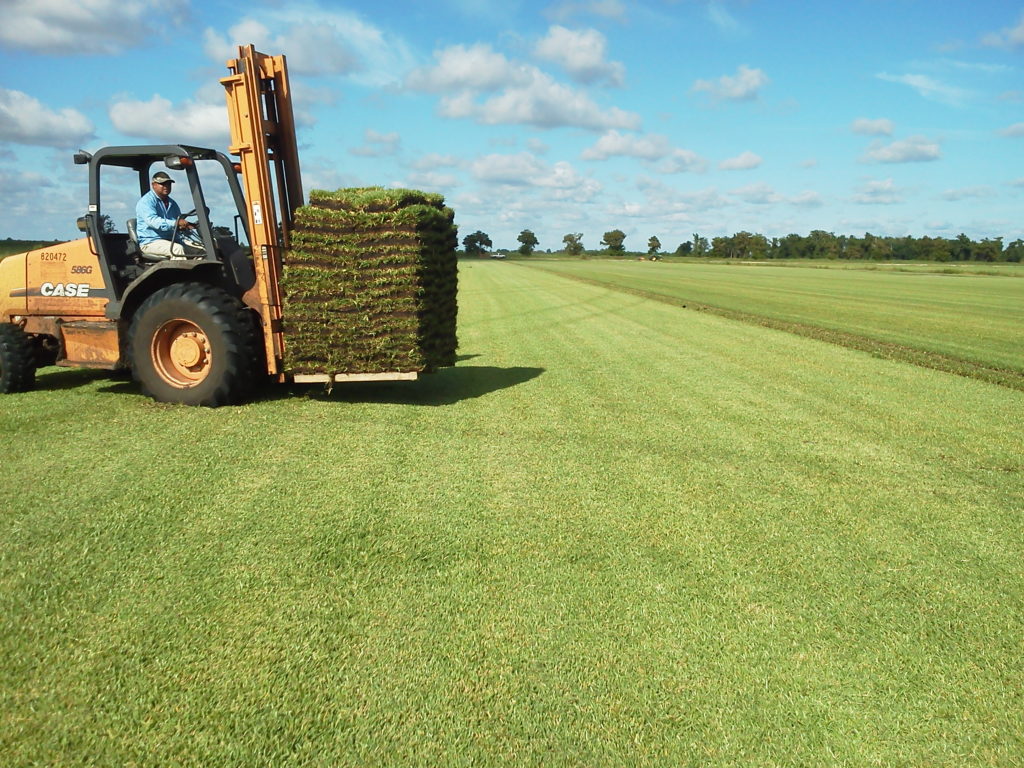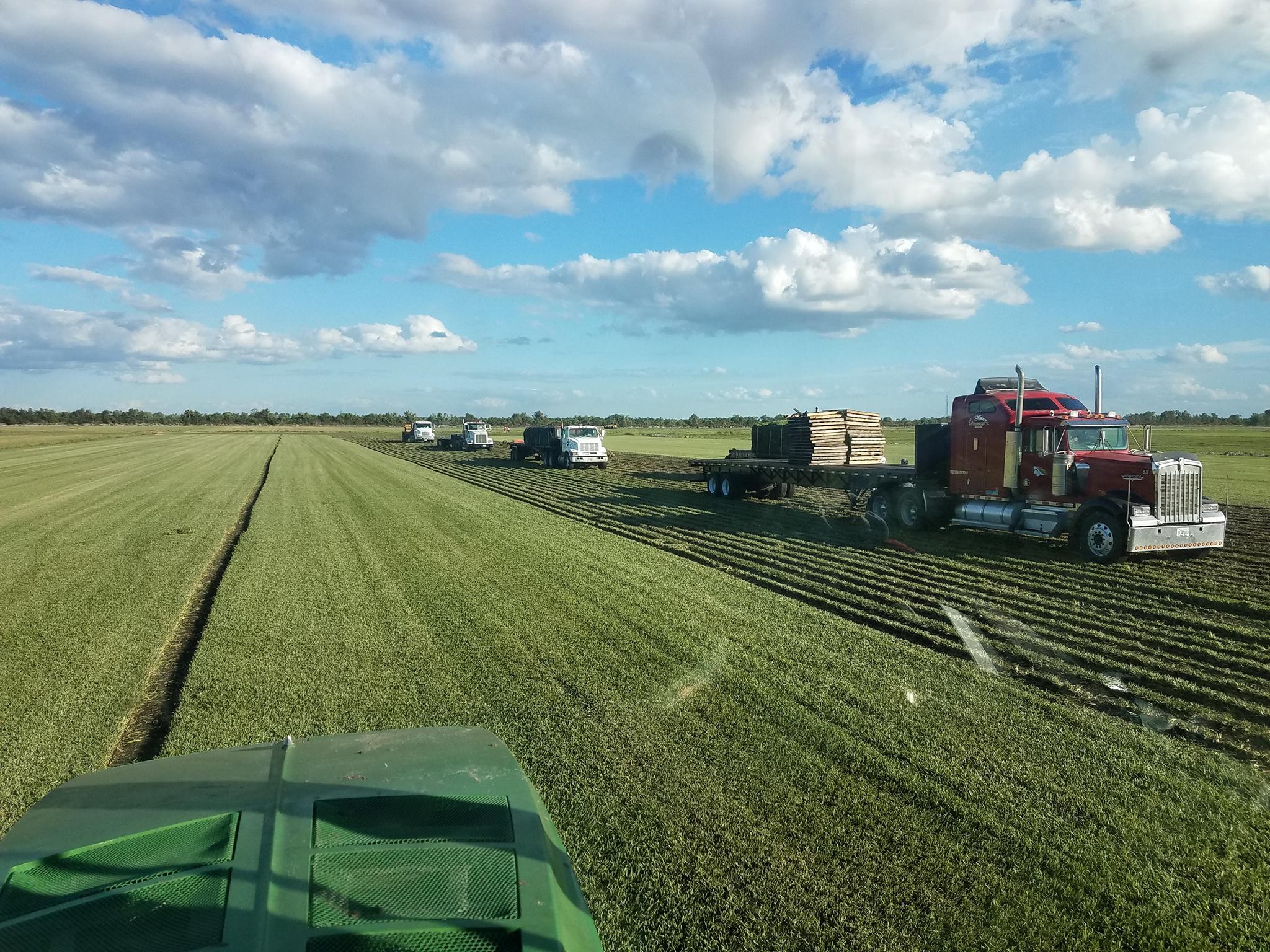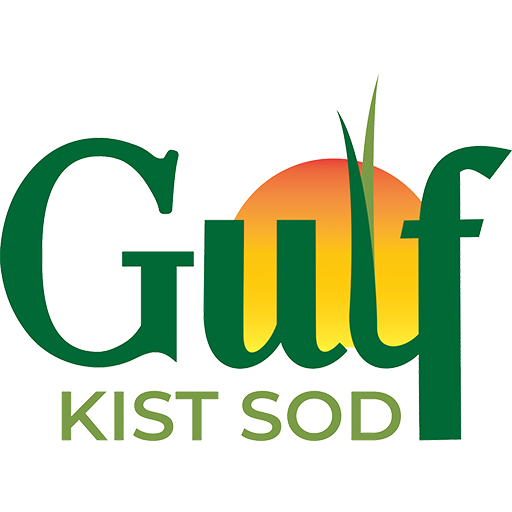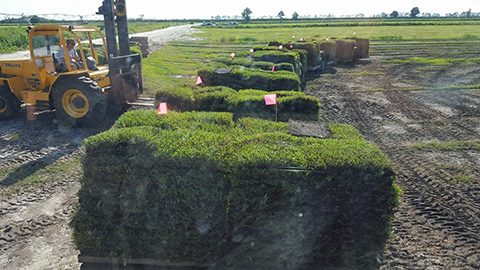Turfgrass sod is better at slowing water runoff and preventing erosion.
Seeded slopes show 10 to 12 times greater runoff than sodded slopes during high rates of irrigation or rain. In tests, water soaked into sod at a rate of 7.6 inches per hour, compared with 2.3 to 2.5 inches per hour into seeded slopes. When nitrates are found in nearby ground water, turf fertilization is sometimes wrongly accused. In fact, tests show that growing turfgrass sod plants absorb most fertilizer nitrogen almost immediately and very little in the way of applied nutrients escape the grass itself. The small amount of phosphate in turf fertilizers is quickly ‘fixed’ by the turfgrass and soil, contributing to plant growth that has many ecological benefits.
Sod helps groundwater replacement.
Microbes in turfgrass sod help break down chemicals.
The use of pesticides on turf has caused concern. Yet, tests show that dense turfgrass sod slows runoff velocity and allows water to infiltrate where soil microbes degrade the chemicals. Pesticides watered in after application stay in the thin layer of thatch in healthy turfgrass. The root zones of the mature grass plants also provide excellent conditions for more complete herbicide degradation.
Do you know your square footage?
We want to ensure your needs are adequately met when it comes to planning your square footage requirements for turf and sod. Not having enough grass to complete a yard can be an inconvenience; too much grass can mean added expenses. Here are a few helpful guidelines for calculating your yard area:

- Square or rectangle yards: Length X Width = square footage
- Triangle areas: Width X Height X 0.5 = square footage
- Oval areas: Length X Width X 0.8 = approximate square footage
- Circular areas: (Diameter /2)2 X 3.14 = approximate square footage
Other helpful square footage guidelines:
- 1 cubic yard of Compost will top dress roughly 1,000 square feet.
- 1 cubic yard of compost will mix into 500 square feet when tilled.
- 1 bushel of sprigs/stolons will cover an area of 100 square feet.
- Plugging uses 10% at minimum of your calculated square footage.
- 1 sheet of sod will plug an 80 square foot area at a 10% ratio.
Plugging is a popular alternative to sodding. Plugs are cut from a sod sheet, usually 2-4 inch cubes spaced roughly 8 inches (center to center) apart. Plugging requires a higher consumption of water and fertilizer; it also allows a higher chance of weed infestation. Herbicide is not recommended for controlling weeds when plugging as it hinders the growth of the grass.
Water Stress
Excessive Nitrogen causes higher evapotranspiration rates (the rate at which your lawn gives up its moisture to the air). This causes it to use up the water in the roots’ vicinity faster and requires watering more frequently to keep the turfgrass plants’ moisture in balance. It also restricts root development, so roots may not be able to reach available water.
Disease
Excessive Nitrogen accentuates the effects of disease and insect injury to grass plants.
Root Dieback
Too much Nitrogen can cause roots to dieback and decrease in size and number.

Reduced recovery from stress
Too much fertilizer exhausts the turfgrass plants’ carbohydrate reserves, restricting the turf’s power to recuperate, and reducing its ability to endure heat, drought, cold and winter desiccation.
How much fertilizer is too much?
The Nitrogen level at which negative effects occur depends on the turfgrass species and cultivar, soil texture, amount and frequency of rain and irrigation, and whether grass clippings are removed or remain on the turfgrass. As a rule-of-thumb, fertilization rates greater than 1 pound of actual Nitrogen per 1,000 sq. ft. per application exhaust turfgrass plant carbohydrates.



